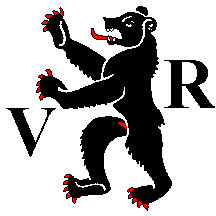Appenzell Ausserrhoden canton (Switzerland) (original) (raw)

This page is part of © FOTW Flags Of The World website
half-canton
Last modified: 2025-04-26 by martin karner
Keywords: switzerland | appenzell | [half canton](keywordh.html#half canton) | canton | bear | german |
Links: FOTW homepage |search | disclaimer and copyright | write us | mirrors
[![[Flag of Appenzell Ausserrhoden]](http://www.crwflags.com/fotw/images/c/ch-ar.gif) ](../images/c/ch-ar.gif)image by Pascal Gross
](../images/c/ch-ar.gif)image by Pascal Gross
- Description of the Flag
- Symbolism of the Flag
- Alternate Design
- Colour Flag
- Flaggen, Knatterfahnen, and Livery Colours
- Logo
- Cockade
- Communes of Appenzell Ausserrhoden canton
- Clickable map of Appenzell Ausserrhoden
- Early 20th century flag design
- Cantonal Shooting Club Appenzell Ausserrhoden (KSV AR)
See also:
- Appenzell Innerrhoden canton
- Appenzell canton
- Switzerland
- RAMPANT, PRIAPIC IN ITS VIRILITY in Dictionary of Vexillology
- Die Wappen der Gemeinden des Kantons Appenzell Ausserrhoden (by Jakob Signer, 1916, German)
- Hoheitszeichen des Kantons Appenzell Ausserrhoden (by Dora F. Rittmeyer, 1964, German)
- Appenzeller Fahnen in der Waffensammlung des Historischen Vereins Herisau(by A. Kläger, 1964, German)
Description of the Flag
Argent, a bear rampant between the majuscules "V" dexter and "R" sinister sable, armed langued and priapic in his virility gules.
The same flag as Innerrhoden with in addition the letters "V" and "R" on either side of the bear.
When a single flag or arms for both cantons is required, that of Appenzell Innerrhoden is displayed.
T.F. Mills, 28 October 1997
Miscellaneous Pictures
– An old banner of Ausserrhoden, probably 17th century (confirmed use 1743), with the golden letters "V" and "R" and the inscription "SOLI" (the continuation "DEO GLORIA" on the reverse side is lost). The letters "V" (U) and "R" stand for "Usser Rhoden"/"Ussroden" (Outer Rhoden). Location: Historical Museum, Herisau (source).
Symbolism of the Flag
The bear is a symbol of power, courage, might and virility. The symbolism of this particular bear is explained by its history.
T.F. Mills, 28 October 1997
Alternate Design
 by António Martins
by António Martins
Angst (1992), "A Panoply of Colours: The Cantonal Banners of Switzerland and the Swiss National Flag" shows the V in the lower half of the flag and the R in the upper; the head of the V on an imaginary center line and the R resting on the base of this center line.
Phil Nelson, 14 October 1998
Colour Flag
[![[Colour Flag AR]](http://www.crwflags.com/fotw/images/c/ch-ap_56.gif) ](../images/c/ch-ap%5F56.gif) image by Ole Andersen
](../images/c/ch-ap%5F56.gif) image by Ole Andersen
Simple rectangular cantonal flag, as shown in Mader (1942) (So-called colour flag [Farbenfahne in German]).
Martin Karner
See also: STATE COLOURS in Dictionary of Vexillology
| Flaggen, Knatterfahnen and Livery Colours | ||
|---|---|---|
[![[Knatterfahnen]](http://www.crwflags.com/fotw/images/c/ch-ar_f.gif) ](../images/c/ch-ar%5Ff.gif) ](../images/c/ch-ar%5Ff.gif) |
[![[Knatterfahnen]](http://www.crwflags.com/fotw/images/c/ch-ar_kf.gif) ](../images/c/ch-ar%5Fkf.gif) ](../images/c/ch-ar%5Fkf.gif) |
[![[livery colours]](http://www.crwflags.com/fotw/images/c/ch-ar_ff.gif) ](../images/c/ch-ar%5Fff.gif) ](../images/c/ch-ar%5Fff.gif) |
by Pascal Gross
Flaggen are vertically hoisted from a crossbar in the manner of gonfanon, in ratio of about 2:9, with a swallowtail that indents about 2 units. The chief, or hoist (square part) usually incorporates the design from the coat of arms – not from the flag. The fly part is always divided lengthwise, usually in a bicolour, triband or tricolour pattern (except Schwyz which is monocolour, andGlarus which has four stripes of unequal width). The colours chosen for the fly end are usually the main colours of the coat of arms, but the choice is not always straight forward.
Knatterfahnen are similar to Flaggen, but hoisted from the long side and have no swallow tail. They normally show the national, cantonal or communal flag in their chiefs.
Željko Heimer, 16 July 2000
See also: HANGING FLAG, VERTICALLY HOISTED FLAG,LIVERY COLOURS in Dictionary of Vexillology
Logo

(source)
Cockade
 image located by Martin Karner
image located by Martin Karner
(source)
Cockade for the cantonal troops' headgear (regulation from 1898, size: ca. 35 mm, reverse side).
Martin Karner, 14 March 2025
See also: Cockades (Swiss Army)